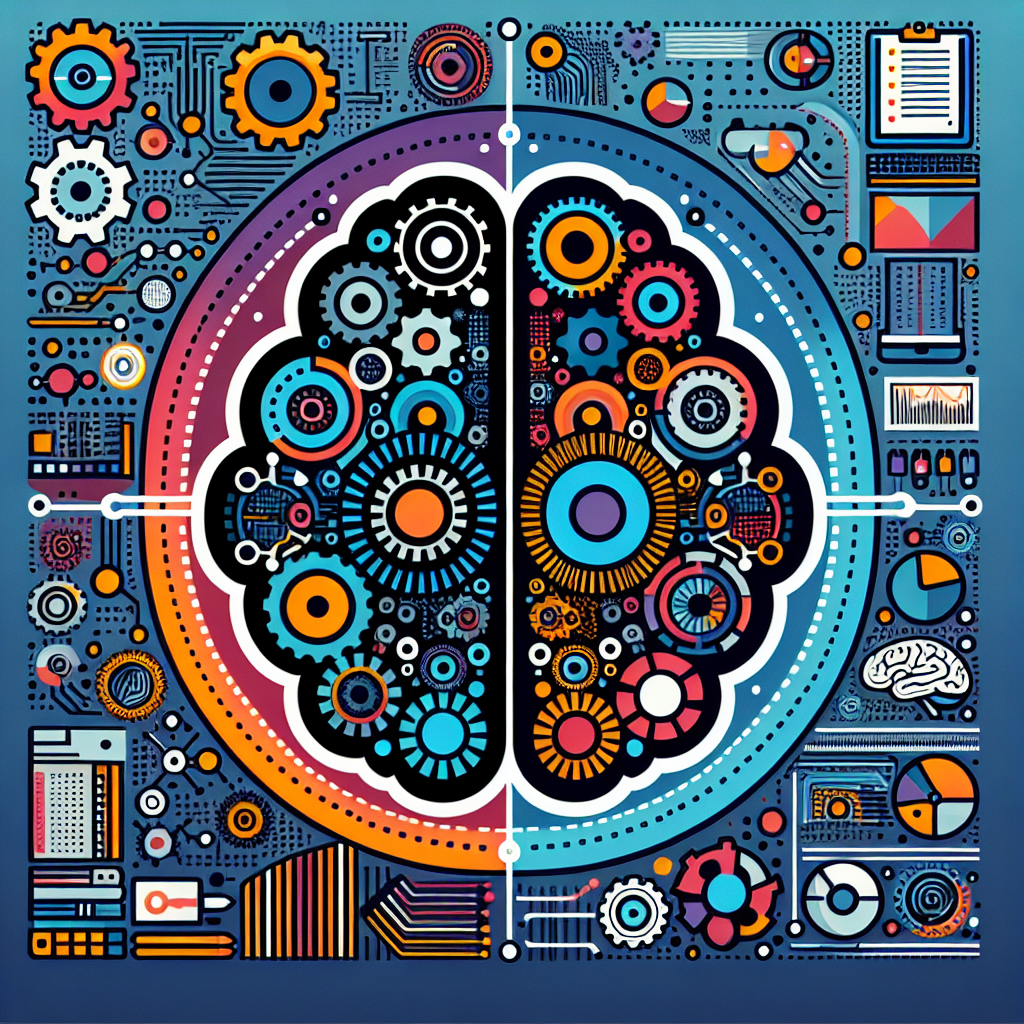Artificial intelligence (AI) and machine learning are two terms that are often used interchangeably, but they are actually two distinct concepts that work together to bring about technological advancements in various industries. In this article, we will break down the basics of AI and machine learning, explore their differences, and answer some frequently asked questions about these technologies.
Artificial Intelligence (AI)
Artificial intelligence is a broad field of computer science that focuses on creating intelligent machines that can perform tasks that typically require human intelligence. These tasks may include problem-solving, decision-making, speech recognition, language translation, and more. AI systems are designed to learn from data, adapt to new information, and make decisions based on that information.
There are two main types of AI: narrow AI and general AI. Narrow AI, also known as weak AI, is designed to perform specific tasks and is limited to the capabilities for which it is programmed. Examples of narrow AI include virtual assistants like Siri and Alexa, recommendation systems like those used by Amazon and Netflix, and autonomous vehicles.
General AI, on the other hand, is a hypothetical form of AI that would have the ability to understand, learn, and apply knowledge across a wide range of tasks. General AI would be able to think and reason like a human, making it capable of performing any intellectual task that a human can do.
Machine Learning
Machine learning is a subset of AI that focuses on developing algorithms and models that enable computers to learn from and make predictions or decisions based on data. Machine learning algorithms are trained using large datasets, which allow them to identify patterns, make predictions, and improve their performance over time.
There are three main types of machine learning: supervised learning, unsupervised learning, and reinforcement learning. In supervised learning, the algorithm is trained on labeled data, which means that the desired output is known. The algorithm learns to map inputs to outputs by optimizing a cost function that measures the difference between the predicted output and the actual output.
Unsupervised learning, on the other hand, involves training the algorithm on unlabeled data. The algorithm learns to find patterns or relationships in the data without being explicitly told what to look for. Unsupervised learning is often used for tasks like clustering, anomaly detection, and dimensionality reduction.
Reinforcement learning is a type of machine learning that involves training an algorithm to take actions in an environment to maximize a reward. The algorithm learns to make decisions based on trial and error, receiving feedback in the form of rewards or penalties for its actions. Reinforcement learning is often used in areas like game playing, robotics, and autonomous systems.
Differences Between AI and Machine Learning
While AI and machine learning are closely related, there are some key differences between the two concepts. AI is a broad field that encompasses a wide range of techniques and technologies for creating intelligent machines, while machine learning is a specific approach within AI that focuses on developing algorithms that can learn from data.
One way to think about the relationship between AI and machine learning is that AI is the broader concept, while machine learning is a subset of AI that enables machines to learn from data and make decisions based on that data. In other words, machine learning is a tool that can be used to achieve artificial intelligence.
Another key difference between AI and machine learning is the level of human intervention required. In traditional AI systems, programmers must explicitly program rules and logic for the system to follow. In contrast, machine learning algorithms can learn from data and improve their performance without explicit programming, making them more adaptable and flexible.
Frequently Asked Questions
Q: What are some examples of AI applications?
A: Some examples of AI applications include virtual assistants like Siri and Alexa, recommendation systems like those used by Amazon and Netflix, autonomous vehicles, facial recognition systems, and natural language processing tools.
Q: How does machine learning work?
A: Machine learning algorithms work by training on large datasets to identify patterns, make predictions, and improve their performance over time. The algorithm learns to map inputs to outputs by optimizing a cost function that measures the difference between the predicted output and the actual output.
Q: What are some common types of machine learning algorithms?
A: Some common types of machine learning algorithms include linear regression, logistic regression, decision trees, random forests, support vector machines, k-nearest neighbors, neural networks, and deep learning algorithms.
Q: What is the difference between supervised and unsupervised learning?
A: In supervised learning, the algorithm is trained on labeled data, which means that the desired output is known. In unsupervised learning, the algorithm is trained on unlabeled data and learns to find patterns or relationships in the data without being explicitly told what to look for.
Q: What are some challenges of AI and machine learning?
A: Some challenges of AI and machine learning include data quality and quantity, interpretability of models, bias and fairness issues, scalability, and ethical concerns surrounding the use of AI technologies.
In conclusion, AI and machine learning are two powerful technologies that are revolutionizing industries and changing the way we interact with technology. While AI is a broad field of computer science that focuses on creating intelligent machines, machine learning is a specific approach within AI that enables computers to learn from data and make decisions based on that data. By understanding the basics of AI and machine learning, we can harness the power of these technologies to drive innovation and create new opportunities for growth and development.

